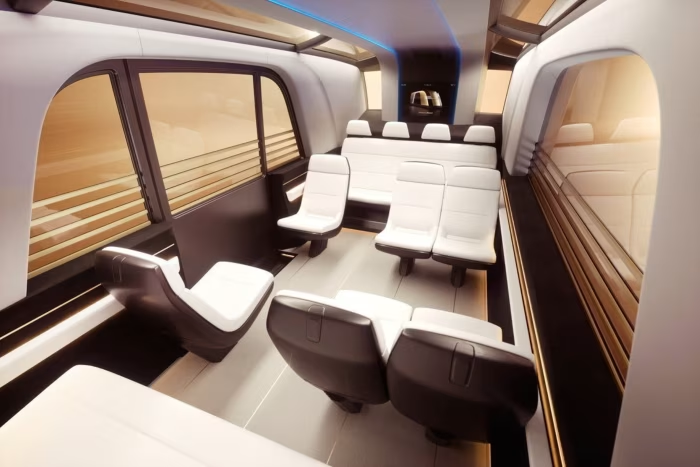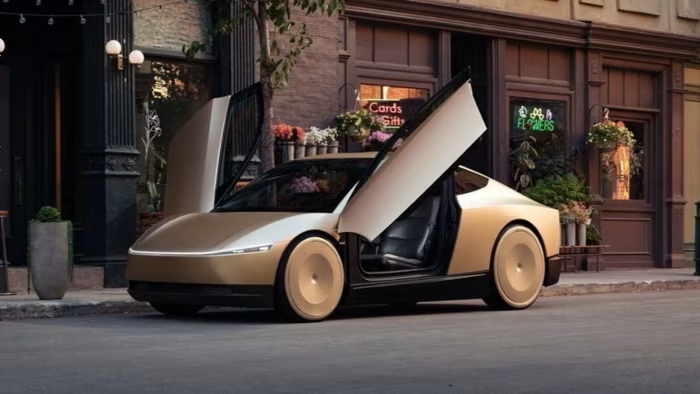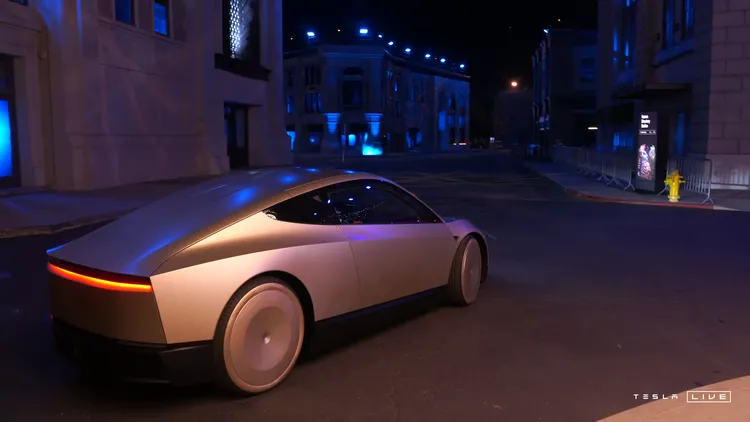Introduction
Tesla’s Elon Musk has once again captivated the world with his latest unveiling event, where he introduced the groundbreaking Cybercab robotaxi and the innovative Robovan. These autonomous vehicles represent the future of transportation, showcasing Tesla’s pioneering spirit and commitment to revolutionizing urban mobility. In this blog post, we will explore the key features and highlights of the Cybercab and Robovan, and how they set themselves apart from traditional vehicles.
The Unveiling Event at Warner Bros Studios
Robotaxi is premium point-to-point electric transport, accessible to everyone pic.twitter.com/oLykwaaTHm
— Tesla (@Tesla) October 11, 2024
A Cinematic Reveal
The event took place at the iconic Warner Bros Studios in Burbank, a location synonymous with entertainment and innovation. The atmosphere was electric, filled with anticipation and excitement as attendees awaited the reveal of Tesla’s latest creations. Elon Musk’s charismatic presentation style kept the audience engaged and intrigued throughout the event. The Cybercab and Robovan were the stars of the show, generating significant buzz and setting the stage for Tesla’s next big leap in autonomous vehicle technology.
Revolutionary Features of the Cybercab Robotaxi
Futuristic Design and Accessibility
The Cybercab boasts a sleek, futuristic design that immediately sets it apart from conventional vehicles. Its standout feature is the butterfly doors, which not only add a touch of elegance but also enhance accessibility for passengers. This design choice underscores Tesla’s commitment to combining form and function in their vehicles.
Advanced Driverless Technology
One of the most revolutionary aspects of the Cybercab is its driverless technology. The absence of a steering wheel and pedals is a testament to the vehicle’s advanced autonomous capabilities. This design decision highlights Tesla’s confidence in their driverless technology, paving the way for a new era of transportation where human intervention is minimal.
Inductive Charging for Convenience
The Cybercab is equipped with inductive charging technology, allowing for convenient recharging on-the-go. This feature ensures that the vehicle can maintain its operations without the need for frequent stops to recharge, making it ideal for continuous use in urban environments.
Anticipated Production Timeline and Challenges Ahead for Tesla’s Cybercab
Optimistic Production Schedule
Elon Musk shared his optimistic forecasts regarding the production timeline for the Cybercab, with an expected launch in 2026. This timeline reflects Tesla’s commitment to bringing this revolutionary vehicle to market as swiftly as possible while ensuring that all safety and regulatory standards are met.
Overcoming Regulatory Hurdles
Despite the enthusiasm surrounding the Cybercab, Tesla faces several challenges in bringing this vehicle to market. Regulatory hurdles and safety standards must be addressed before widespread deployment can occur. These challenges are not unique to Tesla but are part of the broader landscape that all autonomous vehicle manufacturers must navigate.
Exploring the Versatile Capabilities of the Robovan


A Multifunctional Autonomous Vehicle
The Robovan is another standout innovation from Tesla, designed to cater to both cargo transportation and passenger accommodation. Its versatility makes it an exceptional autonomous vehicle, capable of adapting to various transportation needs.
Comparing to Traditional Vans and Buses
Unlike traditional vans and buses, the Robovan incorporates advanced autonomous technology and a design that maximizes both space and comfort. This innovative approach positions the Robovan as a superior alternative for both personal and commercial use, offering unprecedented flexibility and efficiency.
Robotaxi & Robovan pic.twitter.com/pI2neyJBSL
— Tesla (@Tesla) October 11, 2024
Integration with Tesla’s Ridesharing Feature: A Game Changer for Owners’ Earnings Potential
Monetizing Your Cybercab
Tesla’s new ridesharing feature, integrated into its mobile app, allows owners to monetize their Cybercabs effortlessly when not in use. This feature represents a significant shift in personal vehicle ownership dynamics, as it enables vehicle owners to generate income from their assets.
Future Implications for Shared Economy
The introduction of this ridesharing capability underscores the broader trend towards a shared economy. As more people embrace shared mobility solutions, the traditional model of personal vehicle ownership is likely to evolve, making way for more flexible and sustainable transportation options.
Navigating Competition and Regulatory Challenges in The Autonomous Vehicle Space
Competition from Waymo and Cruise
Tesla is not alone in the autonomous vehicle space. Competitors like Waymo and Cruise are also vying for dominance in the robotaxi market. Each company brings its unique strengths and innovations to the table, contributing to the overall advancement of autonomous transportation technology.
Addressing Regulatory Challenges
Before widespread deployment of autonomous vehicles can take place, several regulatory challenges must be addressed. These include safety regulations, testing protocols, and the establishment of clear guidelines for the operation of autonomous vehicles in urban environments. Successfully navigating these challenges is crucial for the future of autonomous transportation.
Conclusion: Shaping The Future Of Urban Mobility With Innovation From Tesla
Tesla’s unveiling of the Cybercab and Robovan marks a significant milestone in the evolution of urban mobility. These innovative vehicles have the potential to reshape transportation solutions, offering unprecedented convenience, efficiency, and sustainability. As we look towards the future, the successful launch and adoption of these vehicles could herald a new era in urban mobility, driven by Tesla’s relentless pursuit of innovation and excellence.







